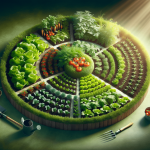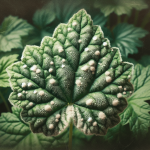This post may contain affiliate links. As an Amazon Associate, we may earn commissions from qualifying purchases.
Gardening in extreme climates presents unique challenges that require inventive solutions to cultivate thriving plants. In arid regions, water scarcity can hinder growth, necessitating efficient irrigation systems and drought-resistant plant varieties to ensure your garden flourishes. Conversely, in cold climates, the harsh weather demands strategies like using frost blankets, choosing cold-hardy plants, and possibly incorporating greenhouses to protect your precious greenery from freezing temperatures. By adapting your gardening practices to meet these environmental challenges, you can create a resilient and vibrant garden, no matter where you live. Have you ever wondered what it takes to create a flourishing garden in some of the harshest climates on Earth? Whether you’re facing the blistering heat of arid regions or the bone-chilling temperatures of cold areas, gardening in extreme conditions certainly presents a unique set of challenges. But don’t worry—it’s entirely possible to grow a thriving garden even under these demanding circumstances once you understand the challenges and solutions involved.

Understanding the Challenges
Lack of Consistent Water Supply
One of the most common challenges in arid regions is the lack of consistent water supply. Water is the lifeblood of any garden, and in areas where rainfall is scarce, maintaining adequate hydration for your plants can be a significant hurdle.
Extreme Temperatures
Whether scorching hot or freezing cold, extreme temperatures can wreak havoc on your plants. High temperatures can lead to rapid water loss and sunburn, while cold temperatures can cause frost damage and kill more sensitive plants.
Poor Soil Quality
Soil in extreme climates often lacks the essential nutrients required for vigorous plant growth. In cold regions, soil may be too dense and devoid of organic matter, whereas in arid regions, it can be sandy and incapable of retaining moisture.
Short Growing Seasons
Cold regions often have short growing seasons, hampering the ability to grow a wide variety of plants. This limited window for cultivation can make it difficult to harvest fruits and vegetables in time.
High Winds
Arid and desert regions, as well as some cold climates, experience high winds that can damage plants and accelerate the evaporation of water from both soil and plant surfaces.
Effective Solutions for Arid Regions
Drought-Tolerant Plants
One of the first steps toward successful gardening in arid climates is selecting drought-tolerant plants. Succulents, cacti, and certain types of grasses are adapted to survive with minimal water.
Water Management Techniques
Effective water management is crucial. Consider implementing the following methods:
- Drip Irrigation: This system delivers water directly to the root zone, minimizing waste.
- Mulching: A layer of mulch can prevent water evaporation and keep the soil cool.
- Rainwater Harvesting: Collecting and storing rainwater to use during dry spells can help maintain your garden.
Soil Amendments
Improving the soil’s ability to retain water can make a significant difference. Adding organic matter such as compost or aged manure can enhance its structure and increase moisture retention.
Shade Structures
Building shade structures can protect plants from the harsh midday sun, reducing water loss and sunburn.
Windbreaks
Create windbreaks using trees, shrubs, or fences to shield your garden from strong winds. This not only protects plants from wind damage but also reduces water evaporation.
Natural Pest Control
Using natural methods to control pests can be particularly effective in arid climates. Beneficial insects like ladybugs can help keep damaging pests in check without the need for harsh chemicals.
Effective Solutions for Cold Regions
Cold-Hardy Plants
Selecting plants that can tolerate cold temperatures is essential. Evergreens, perennials like hostas, and cold-hardy vegetables like kale and carrots can withstand frost and snow.
Season Extenders
To maximize your growing season, consider using season extender tools:
- Greenhouses: Protect plants from frost and extend your growing season.
- Cold Frames: Keep young plants warm and provide shelter from the cold.
- Row Covers: These fabric covers insulate plants against frost and keep pests away.
| Season Extender | Function |
|---|---|
| Greenhouses | Protect plants from frost and extend the growing season |
| Cold Frames | Keep young plants warm and sheltered |
| Row Covers | Insulate plants and protect from pests |
Soil Preparation
In cold regions, the soil may need special preparation. Adding organic matter can improve its structure and drainage, while raising garden beds can prevent waterlogging.
Proper Watering
Watering in cold climates requires a strategic approach. Water your plants early in the day so the soil can warm up, and avoid overwatering as this can lead to root rot in cool, damp conditions.
Snow Insulation
Believe it or not, snow can act as an insulator, protecting plants from extreme cold. When snow covers your garden, it helps to maintain a more consistent temperature around the plants.
Winter Mulching
Applying mulch at the onset of winter can protect plant roots from freezing temperatures. Organic mulches like straw or wood chips provide excellent insulation.
Common Misconceptions
“You Can’t Garden in Extreme Climates”
The belief that it’s impossible to garden in extreme climates is one of the biggest misconceptions. With the right techniques and knowledge, you can cultivate a healthy and productive garden almost anywhere.
“Indoor Gardening is the Only Option”
While indoor gardening is certainly an option for extreme climates, it’s not the only one. Outdoor gardening can be equally successful with proper planning and adjustments.
“You Need Expensive Equipment”
Many people think that special, high-cost equipment is essential for gardening in harsh climates. While some tools and solutions may have initial costs, the reality is that much can be achieved with simple techniques and low-cost solutions.
“Only Native Plants Will Survive”
Though native plants are often well-suited to their environments, a variety of other species can also thrive with proper care. Don’t limit yourself—experimenting can lead to surprising successes.

Practical Tips for Success
Compile Local Knowledge
Talk to local gardeners and extension offices to gather insights specific to your area. Local knowledge can be incredibly valuable.
Monitor Weather Conditions
Stay vigilant about weather forecasts and be prepared to take protective measures when necessary—such as covering plants during unexpected frost or high winds.
Start Small
If you’re new to gardening in extreme climates, start small. Focus on a few plants until you become more familiar with the conditions and required techniques.
Experiment and Adapt
Gardening is often about trial and error. Don’t be afraid to experiment with different plants and methods, and adapt your strategies based on what works and what doesn’t.
Maintain Consistency
Regular maintenance is key. Regularly check your plants for signs of stress or pests, and address any issues promptly.
Educate Yourself
Stay informed on the latest gardening techniques and trends that pertain to extreme climates. The more you know, the better you can tackle the challenges.
Conclusion: Thriving in Extremes
Gardening in extreme climates, whether arid or cold, undoubtedly comes with its own set of challenges. However, armed with the right knowledge and techniques, you can turn even the harshest environment into a thriving garden sanctuary. From selecting the right plants and utilizing season extenders to implementing efficient water management and improving soil quality, there are numerous strategies to help you succeed.
Never underestimate the power of local knowledge and the value of experimenting with different methods to see what works best in your specific conditions. Remember, the journey of gardening is as rewarding as the destination. Happy gardening!








